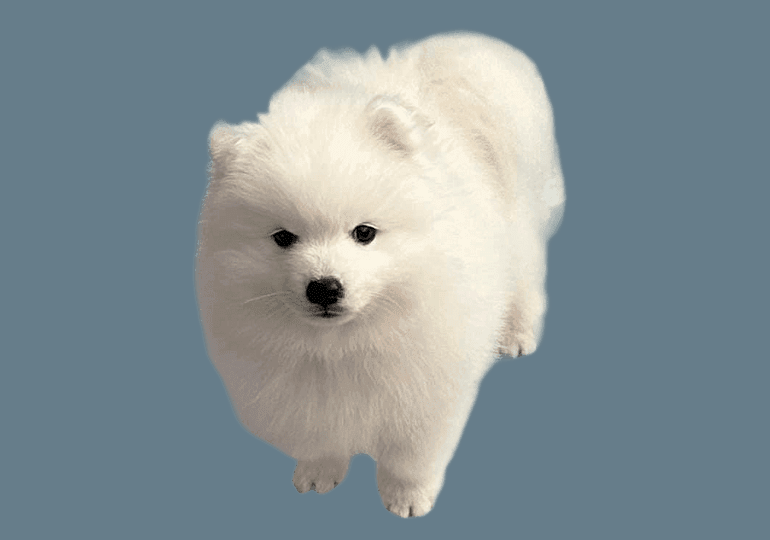
GROUP 7 - NON SPORTING
The Japanese make claim to the origins of the Japanese Spitz, however there is evidence of white Spitz-type dogs in other countries dating back hundreds of years. There were many medium sized Spitz breeds in Europe, especially Germany and Russia, and these were predominantly white.
During the late 1800s this type of dog began making its way to America. During the early 1900s, white Spitz appeared in Japan, possibly due to the movements of armed forces and their families and pets in and out of Japan, China and Russia from America and Canada.
Today’s Japanese Spitz was developed in Japan between 1920 and 1950. The breed arrived relatively quickly in Australia. The first exports from Japan arrived in Sweden in 1973, and then the first imports into England arrived from Sweden in 1977. Breed fanciers in Australia were fortunate enough to import progeny of those early arrivals in England and as a result the breed arrived on our shores in 1980. The first litter in Australia was born in 1981.
The Japanese Spitz is an attractive dog with a profuse off-standing coat of the purest white, contrasted by black eye rims, lips and nose, and dark expressive eyes. It has an alert appearance with pointed ears, pointed muzzle, triangular shaped head and well plumed tail carried proudly over their back. They possess a firm, strong body that is full of flexibility. It is a sturdy dog with no toyishness.
The ideal height is between 34 and 35 centimetres for males and between 30 and 31 centimetres for females. The Japanese Spitz is quick and cheerful in its motion – it is light and nimble, active and energetic.
The Japanese Spitz is a family dog. It’s an intelligent breed and, having been developed purely as a companion dog, it is always eager to please. It enjoys living both indoors and outdoors, in fact it enjoys being wherever you are, thriving on human companionship.
It does not need lots of exercise,but it is an active breed and enjoys regular walks. If it gets bored the Japanese Spitz can be a little mischievous, so it’s not a dog to be left in the backyard and forgotten.
Despite its long white coat, the Japanese Spitz is a relatively low maintenance breed. Contrary to most peoples’ expectations, its coat is easy to look after. Due to the coat’s soft texture, mud and dirt will fall off, or can be easily brushed out. While the Japanese Spitz may love to play in the dirt, this is a fastidious dog that will lick itself clean, like a cat. It does shed its coat, once a year for males and twice a year for females. With regular grooming, you will be rewarded with wonderfully attractive dog with a sparkling white coat.
The Japanese Spitz is an extremely healthy breed, and the only problem they may suffer from is Patella Luxation (slipping kneecaps). This fault is easily assessed by a veterinarian in both puppies and adults, and registered breeders are conscious of this and should strive to eliminate this weakness from their breeding programs.
Some Japanese Spitz may also suffer from tear staining. This can be caused by a number of issues, from blocked tear ducts to a rounder eye shape.
Words: Amanda Huggins
Now you know a little about the Japanese Spitz and have decided this is the dog for you, or you would like more information, please make contact with the breed club or your State controlling body for purebred dogs. They will be able to give you information about available puppies and also suggest dog shows where you can see the breed and speak to breeders. In this way you will gain a better perspective of the Japanese Spitz and its needs and whether this breed would suit your lifestyle.

